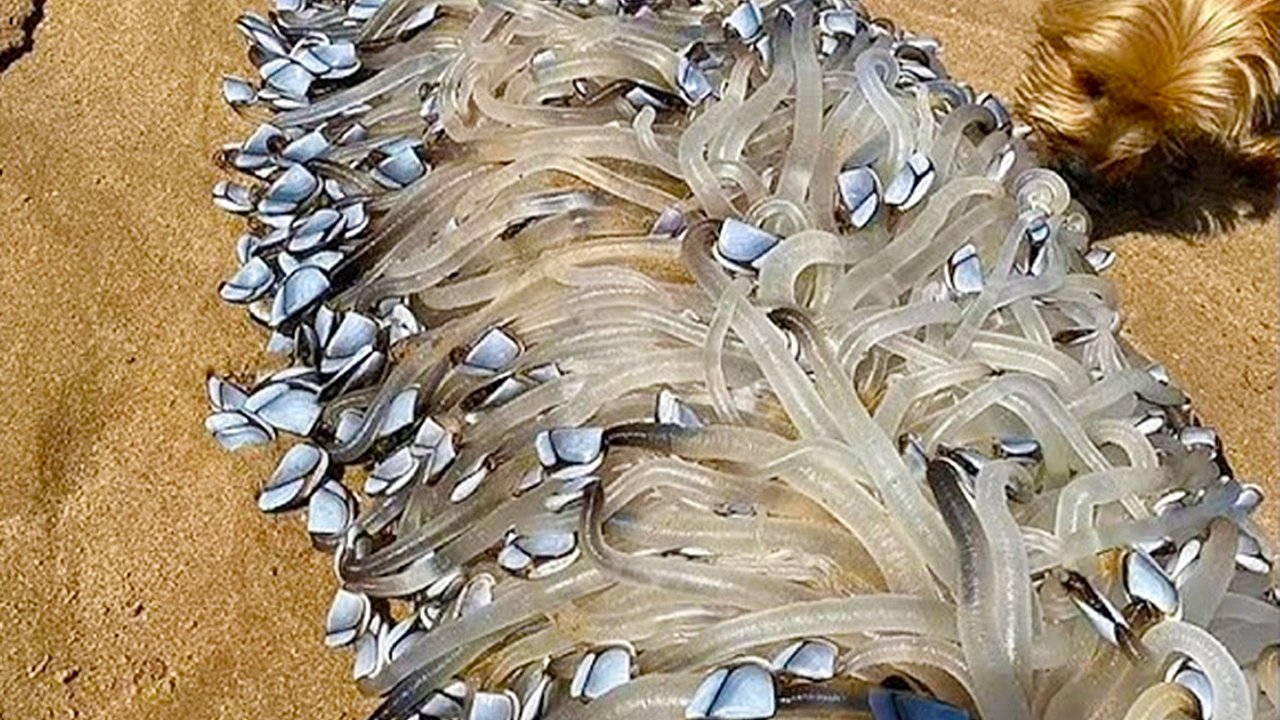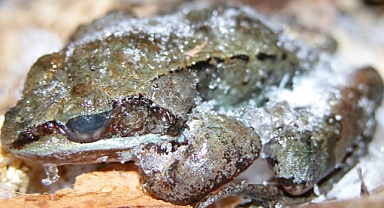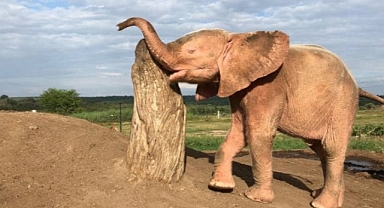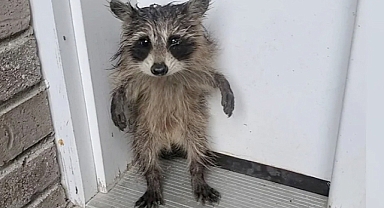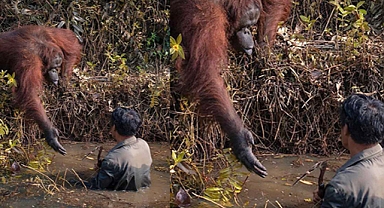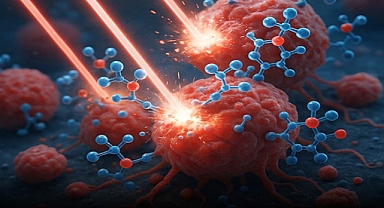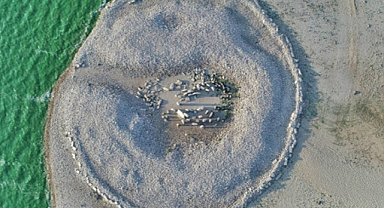Strange Marine Mass Found on Adelaide Beach
A strange three-meter-long object washed ashore on Horseshoe Bay in Port Elliot, south of Adelaide, causing confusion and excitement among locals. A dog walker stumbled across the peculiar mass on Monday morning and was left puzzled by the sight.The unusual collection of translucent stalks, each tipped with shells, quickly sparked discussions online, with one resident comparing it to "vermicelli with shells at the ends." Another remarked, "In 26 years of walking this beach, I’ve never seen anything like it. Nature always surprises!"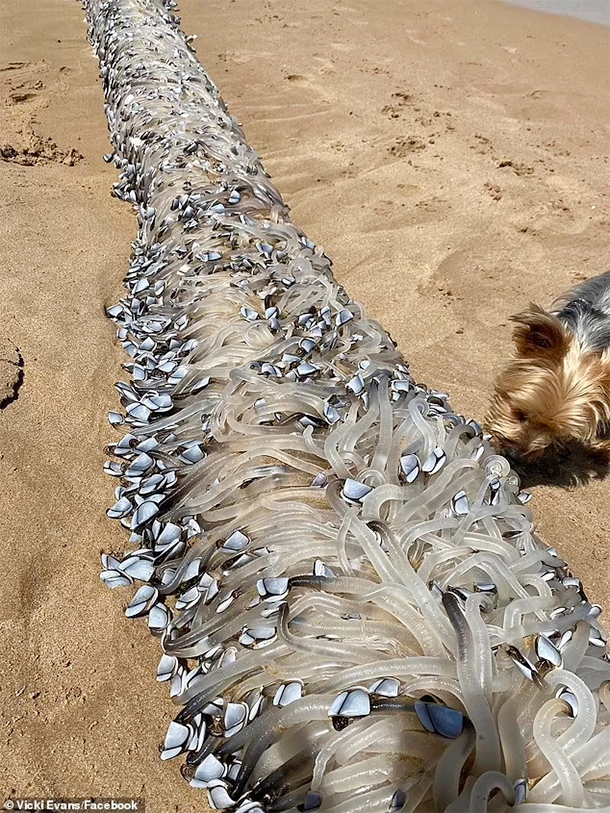 A South Australian woman discovered a long piece of wood covered in goose barnacles while walking her dog on the beach.
A South Australian woman discovered a long piece of wood covered in goose barnacles while walking her dog on the beach.
Some locals who inspected the phenomenon claimed to see "brown creatures moving in and out" of the shells. Social media buzzed with theories, but eagle-eyed residents soon identified the mass as a dense cluster of goose barnacles.What Are Goose Barnacles?
Dr. Zoe Doubleday, a marine ecologist from the University of South Australia, explained the unusual find. "Barnacles are crustaceans, but they are in a group more closely related to prawns than mollusks like cockles," she said.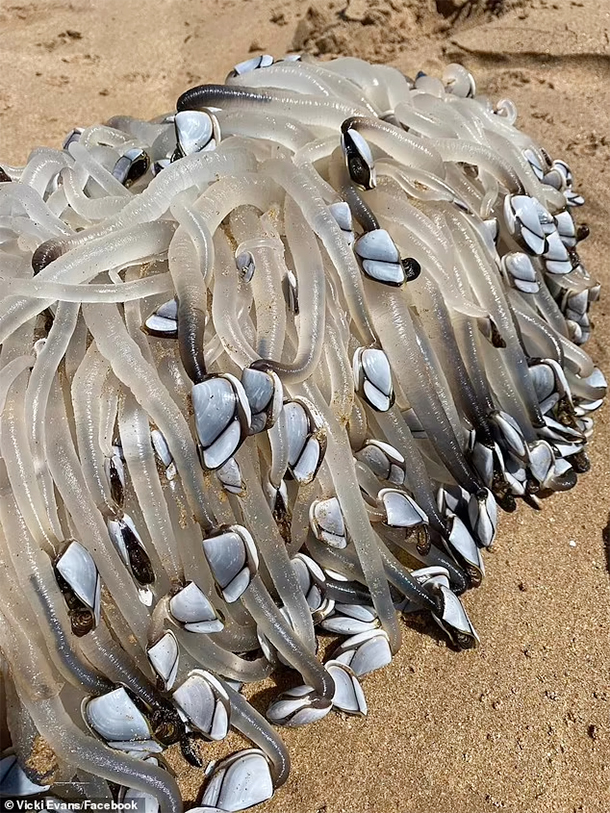 A woman shared the images with a locals' group and people had no clue what it was.There are two main types of barnacles:Acorn barnacles: Commonly found on rocks and the hulls of ships.
A woman shared the images with a locals' group and people had no clue what it was.There are two main types of barnacles:Acorn barnacles: Commonly found on rocks and the hulls of ships.
Goose barnacles: These attach to floating objects like ropes, driftwood, and marine infrastructure.
Goose barnacles have a flexible black stalk, known as the peduncle, which attaches them to surfaces. The barnacle's main body sits inside a white, chalky shell at the end of the stalk. With jointed legs, goose barnacles filter food such as plankton and organic debris from the water.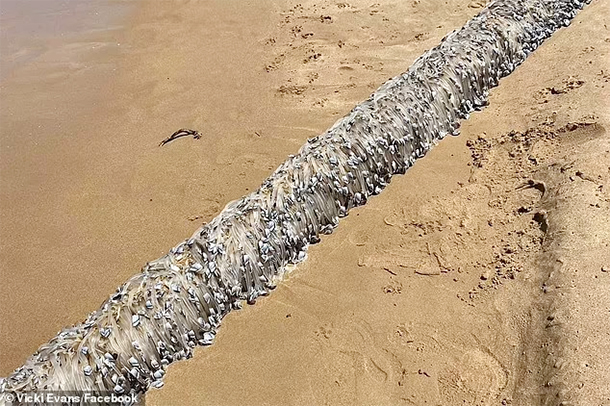 A marine ecologist said goose barnacles are a specific type of barnacle and differ from those typically associated with boats and whales.Interestingly, in history, goose barnacles were once thought to hatch into birds. This strange belief arose because their shell shape resembled the heads of barnacle geese—migratory birds whose eggs and nests were rarely seen in Europe.Origin of the Barnacle Cluster
A marine ecologist said goose barnacles are a specific type of barnacle and differ from those typically associated with boats and whales.Interestingly, in history, goose barnacles were once thought to hatch into birds. This strange belief arose because their shell shape resembled the heads of barnacle geese—migratory birds whose eggs and nests were rarely seen in Europe.Origin of the Barnacle Cluster
Dr. Doubleday suggested the barnacles likely grew on a piece of marine debris, such as a section of old jetty or a rope that had floated for years. "It must have been in the water a long time to develop such a dense cluster," she said. Goose barnacles are often found on floating marine objects, docks, or even space debris, as seen in the Isles of Scilly.Local Curiosity and Culinary Potential
Some locals saw the barnacle cluster as a rare treat, with one joking, "Grab them! Paella heaven!" Another added, "They taste like razor fish—this is a delicacy you won’t see often!"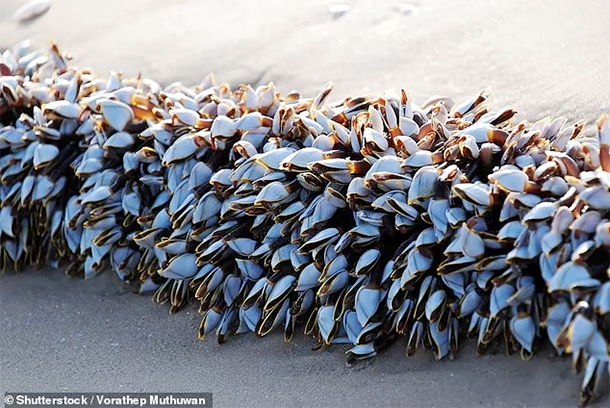 The strange sea-creatures are considered a delicacy and many locals suggested Port Elliot residents eat them.Goose barnacles are highly valued in gourmet cuisine across Europe and can fetch high prices, especially in regions like Spain and Portugal. They are often harvested from rocky shores during low tide and served as a delicacy known as percebes.Identifying Goose Barnacles
The strange sea-creatures are considered a delicacy and many locals suggested Port Elliot residents eat them.Goose barnacles are highly valued in gourmet cuisine across Europe and can fetch high prices, especially in regions like Spain and Portugal. They are often harvested from rocky shores during low tide and served as a delicacy known as percebes.Identifying Goose Barnacles
Goose barnacles are easy to recognize:
A strange three-meter-long object washed ashore on Horseshoe Bay in Port Elliot, south of Adelaide, causing confusion and excitement among locals. A dog walker stumbled across the peculiar mass on Monday morning and was left puzzled by the sight.The unusual collection of translucent stalks, each tipped with shells, quickly sparked discussions online, with one resident comparing it to "vermicelli with shells at the ends." Another remarked, "In 26 years of walking this beach, I’ve never seen anything like it. Nature always surprises!"
 A South Australian woman discovered a long piece of wood covered in goose barnacles while walking her dog on the beach.
A South Australian woman discovered a long piece of wood covered in goose barnacles while walking her dog on the beach.Some locals who inspected the phenomenon claimed to see "brown creatures moving in and out" of the shells. Social media buzzed with theories, but eagle-eyed residents soon identified the mass as a dense cluster of goose barnacles.What Are Goose Barnacles?
Dr. Zoe Doubleday, a marine ecologist from the University of South Australia, explained the unusual find. "Barnacles are crustaceans, but they are in a group more closely related to prawns than mollusks like cockles," she said.
 A woman shared the images with a locals' group and people had no clue what it was.There are two main types of barnacles:Acorn barnacles: Commonly found on rocks and the hulls of ships.
A woman shared the images with a locals' group and people had no clue what it was.There are two main types of barnacles:Acorn barnacles: Commonly found on rocks and the hulls of ships.Goose barnacles: These attach to floating objects like ropes, driftwood, and marine infrastructure.
Goose barnacles have a flexible black stalk, known as the peduncle, which attaches them to surfaces. The barnacle's main body sits inside a white, chalky shell at the end of the stalk. With jointed legs, goose barnacles filter food such as plankton and organic debris from the water.
 A marine ecologist said goose barnacles are a specific type of barnacle and differ from those typically associated with boats and whales.Interestingly, in history, goose barnacles were once thought to hatch into birds. This strange belief arose because their shell shape resembled the heads of barnacle geese—migratory birds whose eggs and nests were rarely seen in Europe.Origin of the Barnacle Cluster
A marine ecologist said goose barnacles are a specific type of barnacle and differ from those typically associated with boats and whales.Interestingly, in history, goose barnacles were once thought to hatch into birds. This strange belief arose because their shell shape resembled the heads of barnacle geese—migratory birds whose eggs and nests were rarely seen in Europe.Origin of the Barnacle ClusterDr. Doubleday suggested the barnacles likely grew on a piece of marine debris, such as a section of old jetty or a rope that had floated for years. "It must have been in the water a long time to develop such a dense cluster," she said. Goose barnacles are often found on floating marine objects, docks, or even space debris, as seen in the Isles of Scilly.Local Curiosity and Culinary Potential
Some locals saw the barnacle cluster as a rare treat, with one joking, "Grab them! Paella heaven!" Another added, "They taste like razor fish—this is a delicacy you won’t see often!"
 The strange sea-creatures are considered a delicacy and many locals suggested Port Elliot residents eat them.Goose barnacles are highly valued in gourmet cuisine across Europe and can fetch high prices, especially in regions like Spain and Portugal. They are often harvested from rocky shores during low tide and served as a delicacy known as percebes.Identifying Goose Barnacles
The strange sea-creatures are considered a delicacy and many locals suggested Port Elliot residents eat them.Goose barnacles are highly valued in gourmet cuisine across Europe and can fetch high prices, especially in regions like Spain and Portugal. They are often harvested from rocky shores during low tide and served as a delicacy known as percebes.Identifying Goose BarnaclesGoose barnacles are easy to recognize:
- Appearance: They grow in clusters with a flexible black stalk and white shells.
- Habitat: Found attached to floating objects such as driftwood, ships, and marine debris.
- Feeding: They use their legs to filter plankton from the water.
- A similar species, the buoy barnacle (Lepas fascicularis), forms a floating, sponge-like structure rather than attaching to external objects. Buoy barnacles are often pale purple in color and wash ashore after storms.
